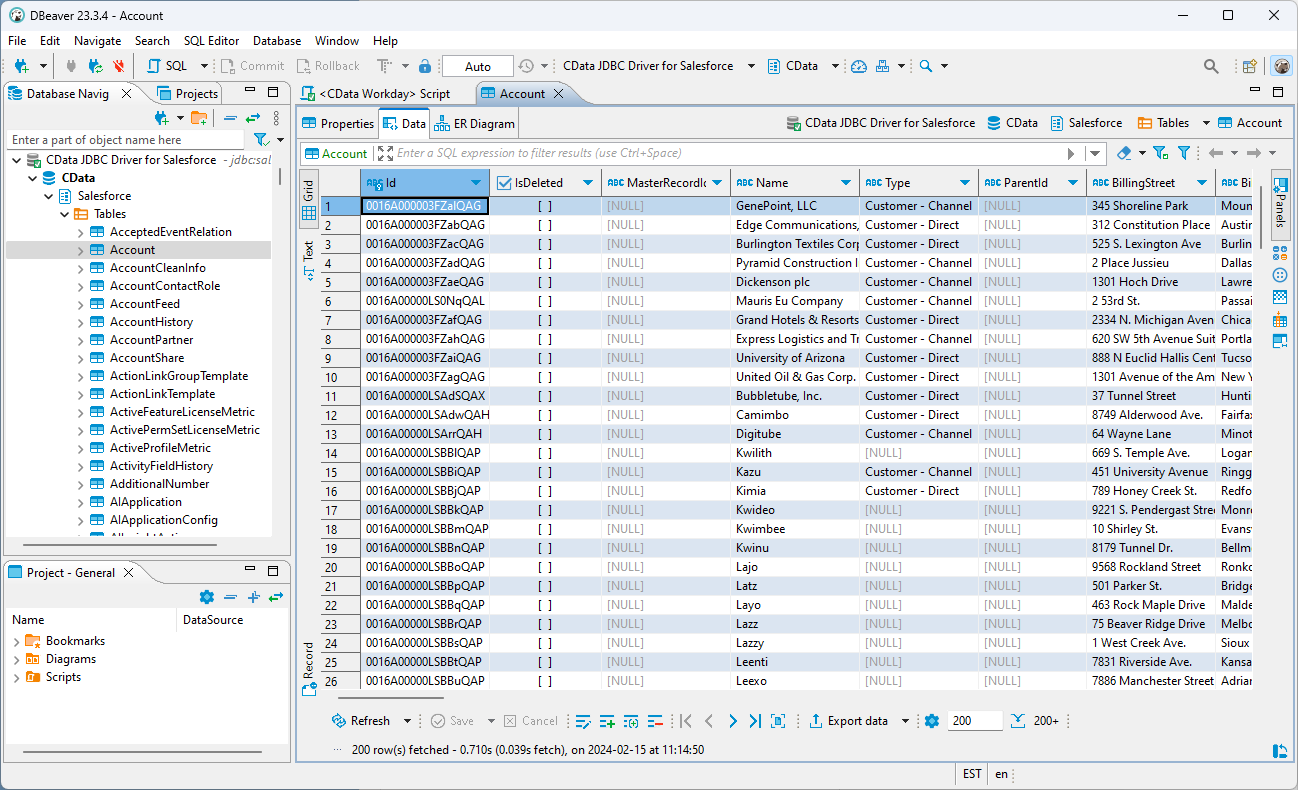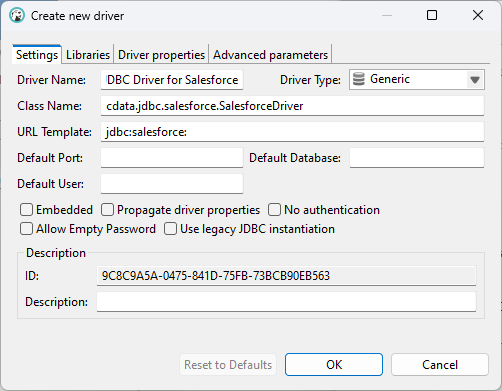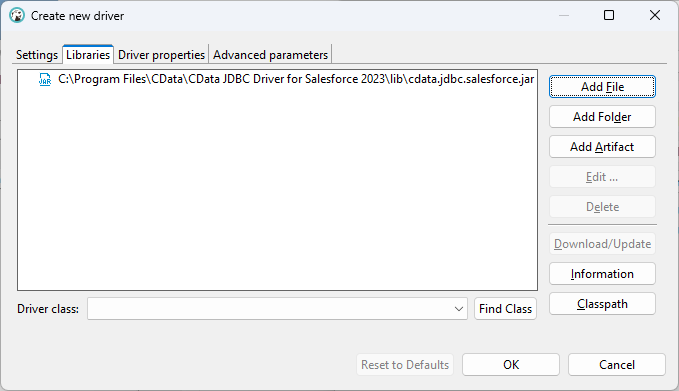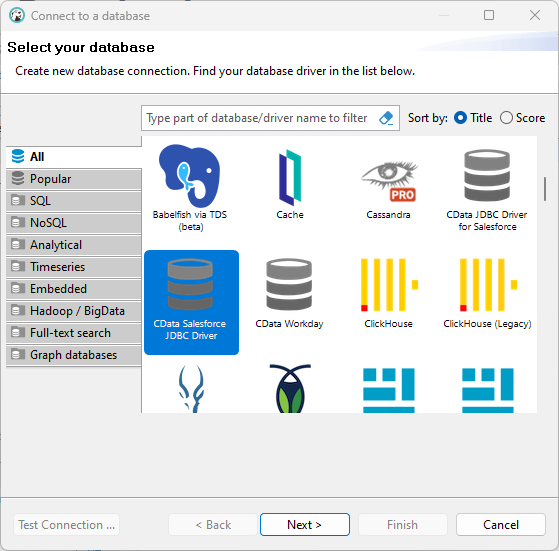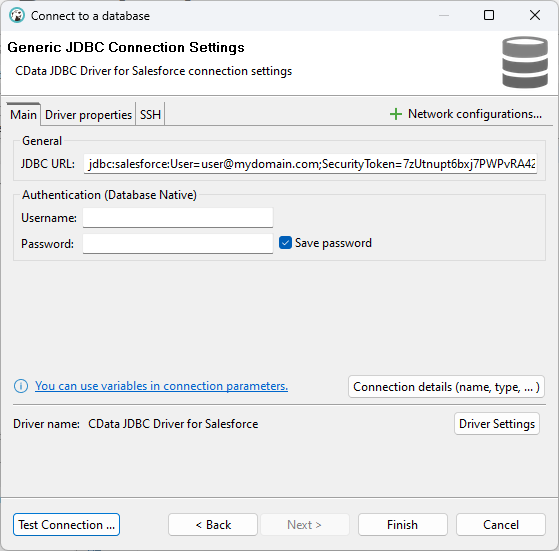Discover how a bimodal integration strategy can address the major data management challenges facing your organization today.
Get the Report →How to Connect DBeaver to EnterpriseDB via a JDBC Driver
Manage EnterpriseDB data with visual tools in DBeaver like the query browser.
The CData JDBC Driver for EnterpriseDB implements JDBC standards that enable third-party tools to interoperate, from wizards in IDEs to business intelligence tools. This article shows how to connect to EnterpriseDB data with wizards in DBeaver and browse data in the DBeaver GUI.
Create a JDBC Data Source for EnterpriseDB Data
Follow the steps below to load the driver JAR in DBeaver.
- Open the DBeaver application and, in the "Database" menu, select the "Driver Manager" option. Click "New" to open the "Create new driver" form.
- In the Settings tab:
- Set Driver Name to a user-friendly name for the driver (e.g. CData JDBC Driver for EnterpriseDB).
- Set Class Name to the class name for the JDBC driver: cdata.jdbc.enterprisedb.EnterpriseDBDriver.
- Set URL Template to jdbc:enterprisedb:.
![Configure the new driver settings (Salesforce is shown).]()
- In the Libraries tab, click "Add File," navigate to the "lib" folder in the installation directory (C:\Program Files\CData[product_name] XXXX\) and select the JAR file (cdata.jdbc.EnterpriseDB.jar).
![Loading the JDBC JAR file (Salesforce is shown).]()
Create a Connection to EnterpriseDB Data
Follow the steps below to add credentials and other required connection properties.
- In the "Database" menu, click "New Database Connection."
- In the "Connect to a database" wizard that results, select the driver you just created (e.g. CData JDBC Driver for EnterpriseDB) and click "Next >."
![Selecting the driver (Salesforce is shown).]()
- On the Main tab of the configuration wizard, set the JDBC URL, using the required connection properties:
The following connection properties are required in order to connect to data.
- Server: The host name or IP of the server hosting the EnterpriseDB database.
- Port: The port of the server hosting the EnterpriseDB database.
You can also optionally set the following:
- Database: The default database to connect to when connecting to the EnterpriseDB Server. If this is not set, the user's default database will be used.
Connect Using Standard Authentication
To authenticate using standard authentication, set the following:
- User: The user which will be used to authenticate with the EnterpriseDB server.
- Password: The password which will be used to authenticate with the EnterpriseDB server.
Connect Using SSL Authentication
You can leverage SSL authentication to connect to EnterpriseDB data via a secure session. Configure the following connection properties to connect to data:
- SSLClientCert: Set this to the name of the certificate store for the client certificate. Used in the case of 2-way SSL, where truststore and keystore are kept on both the client and server machines.
- SSLClientCertPassword: If a client certificate store is password-protected, set this value to the store's password.
- SSLClientCertSubject: The subject of the TLS/SSL client certificate. Used to locate the certificate in the store.
- SSLClientCertType: The certificate type of the client store.
- SSLServerCert: The certificate to be accepted from the server.
Built-in Connection String Designer
For assistance in constructing the JDBC URL, use the connection string designer built into the EnterpriseDB JDBC Driver. Either double-click the JAR file or execute the jar file from the command-line.
java -jar cdata.jdbc.enterprisedb.jarFill in the connection properties and copy the connection string to the clipboard.
![Using the built-in connection string designer to generate a JDBC URL (Salesforce is shown.)]()
Below is a typical connection string:
jdbc:enterprisedb:User=postgres;Password=admin;Database=postgres;Server=127.0.0.1;Port=5444![Configuring the JDBC URL (Salesforce is shown).]()
- Click "Test Connection ..." to ensure you have configured the connection properly.
![A successfully configured connection (Salesforce is shown).]()
- Click "Finish."
Query EnterpriseDB Data
You can now query information from the tables exposed by the connection: Right-click a Table and then click View Table. The data is available on the Data tab.
